Ever wondered how fast ground cover plants weave their leafy magic? Well, just like us, each of these green gems has its own pace.
Some are sprinters, quickly cloaking a 2-foot area in a single year, while others are more like marathon runners, taking their sweet time and spreading leisurely over two years.
It's all down to the plant's qualities, its chosen spot in your garden, and whether it feels right at home in your local climate.
So, if you've got a patch in your garden that's crying out for some ground cover love, and you're itching for it to grow at warp speed, we've got just the thing for you.
While we can't pin down a precise growth timeline, we can certainly share a list of some of the fastest-growing ground cover stars.
Ready to meet these green speedsters? Buckle up and read on - a world of rapid green growth awaits!
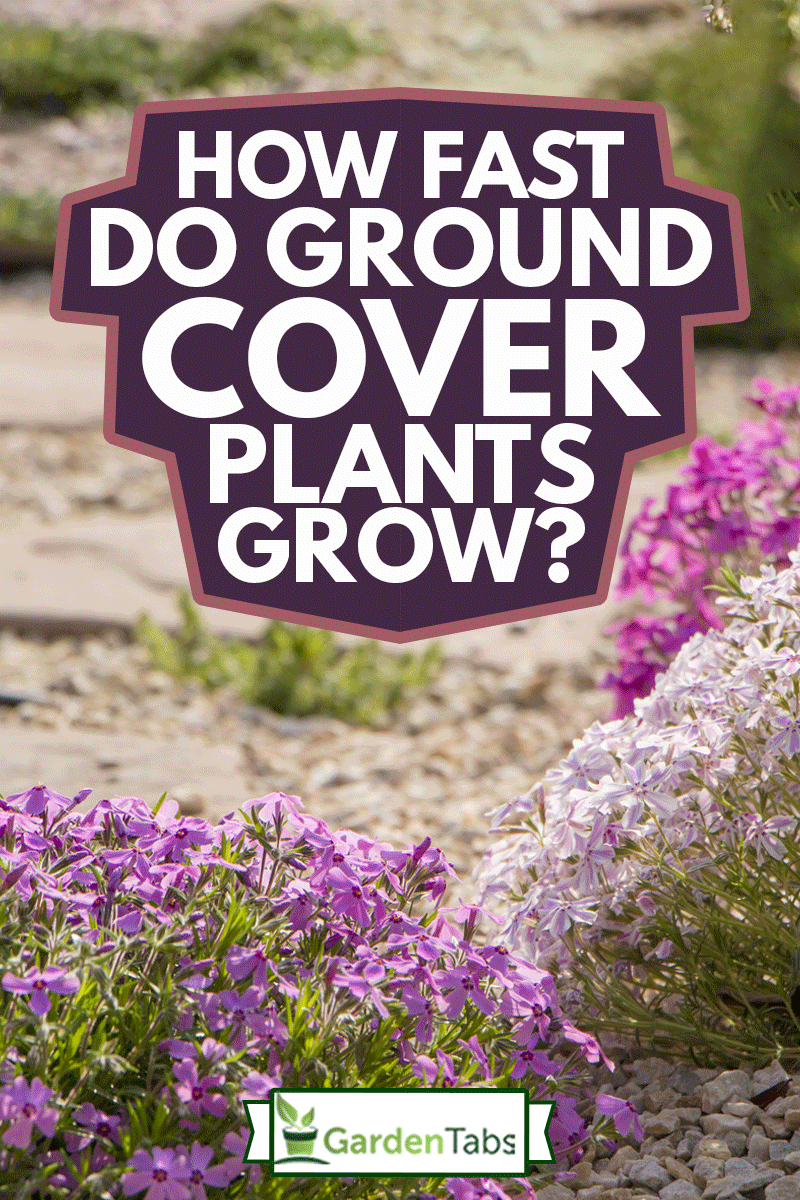
Contents
What Is The Fastest-Growing Ground Cover Plant?
There are so many different varieties of ground covers; it's impossible to say which one grows the fastest. How fast a ground cover grows depends on where you live and where the ground cover is planted.
Just like other plants, ground covers each have their own conditions under which they thrive.
But if you need suggestions regarding ground covers that grow quickly, here are eight of the fastest-growing ones.
We'll also provide information about which USDA plant hardiness zones they'll grow best in and any other applicable details.
8 Fast-Growing Ground Cover Plants
1. Creeping Phlox
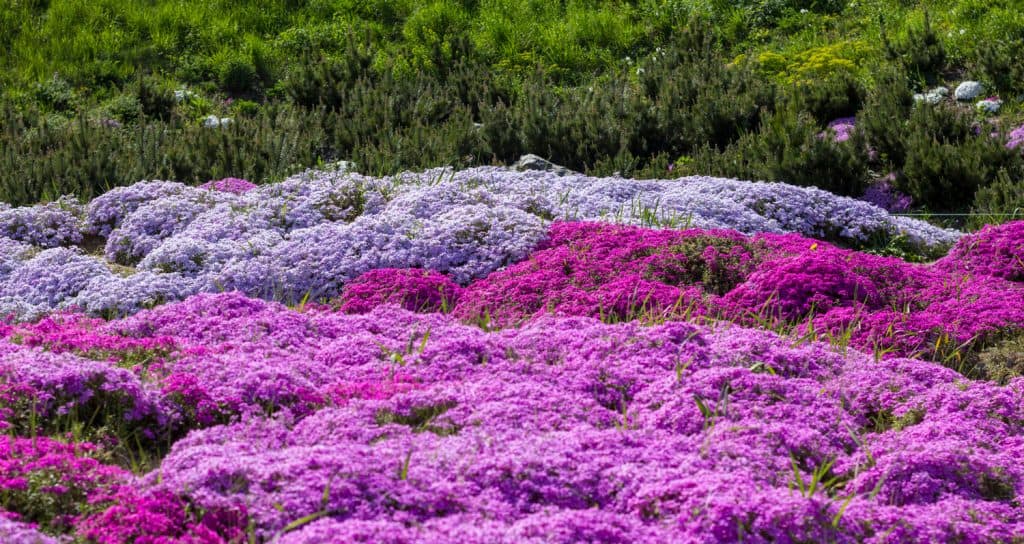
Creeping phlox does way more than cover the ground. It also provides a vibrant pink, purple, white, or even blue color to your landscape through the many flowers produced by the plant.
This ground cover takes about two years to reach full maturity, but when it does, each plant will cover an area of about 2 feet and grows about 6 inches tall.
As if the vibrant colors weren't enough of an incentive to purchase creeping phlox for your landscape, it also has many other benefits. It is deer-resistant, drought-tolerant, and resists soil erosion. This ground cover grows in hardiness zones 3-9.
2. Creeping Jenny
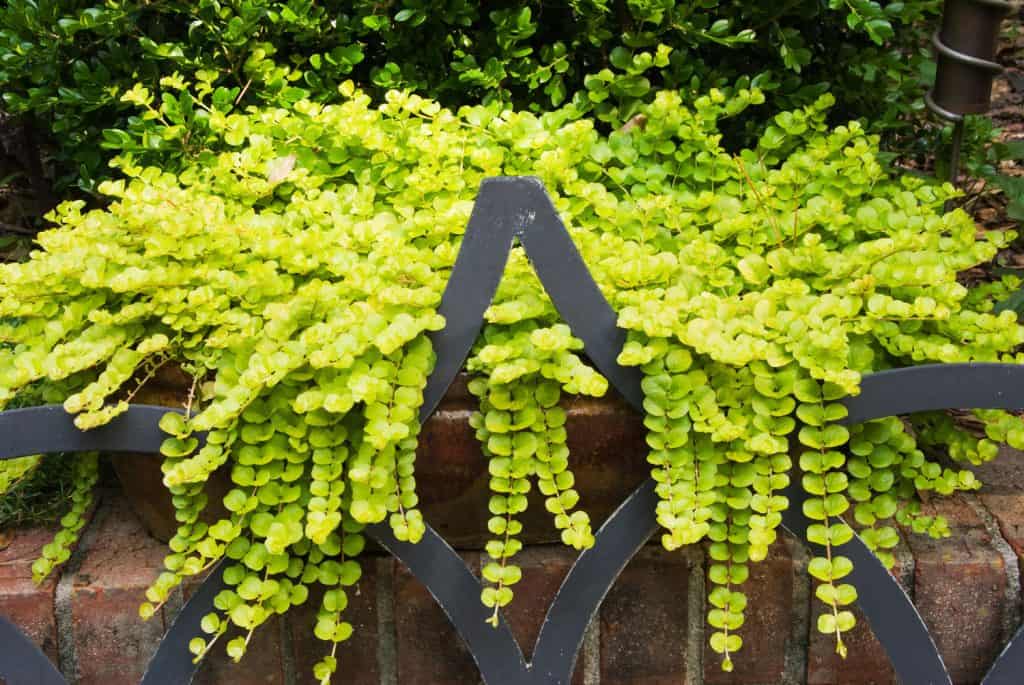
Creeping Jenny is one of the most popular ground cover plants because it can be grown in full sun or partial shade.
Its vibrant green color will add dimension and texture to your garden or landscape as its trailing stems spill over the edges of your flower beds.
Creeping Jenny is one of the fastest-growing ground cover plants as long as it is planted in the right conditions. It will quickly spread up to two feet.
But, it needs a lot of water to thrive. Therefore, it doesn't do well in drought-prone areas. It is suitable for hardiness zones 3-9.
3. Creeping Thyme
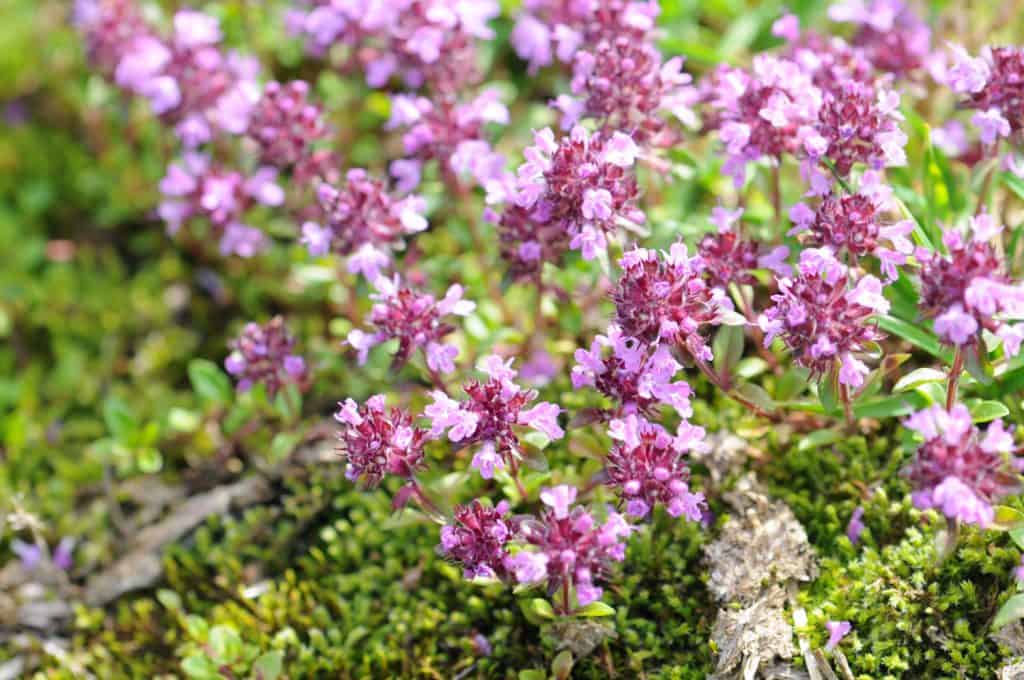
Are you sensing a pattern here with the word "creeping?" Just like the other two ground covers we've already mentioned, creeping thyme gets its name from the way it creeps along the ground to cover large areas.
It's commonly used as a border along sidewalks and pathways.
Creeping thyme takes about a year to grow fully, and after that year, it will start to spread.
In addition to providing your landscape with a pop of color through its pink and purple flowers, creeping thyme also provides a bit of fragrance similar to the thyme you would use to cook with.
This ground cover will grow as a perennial in zones 4-8.
4. Trailing Vinca
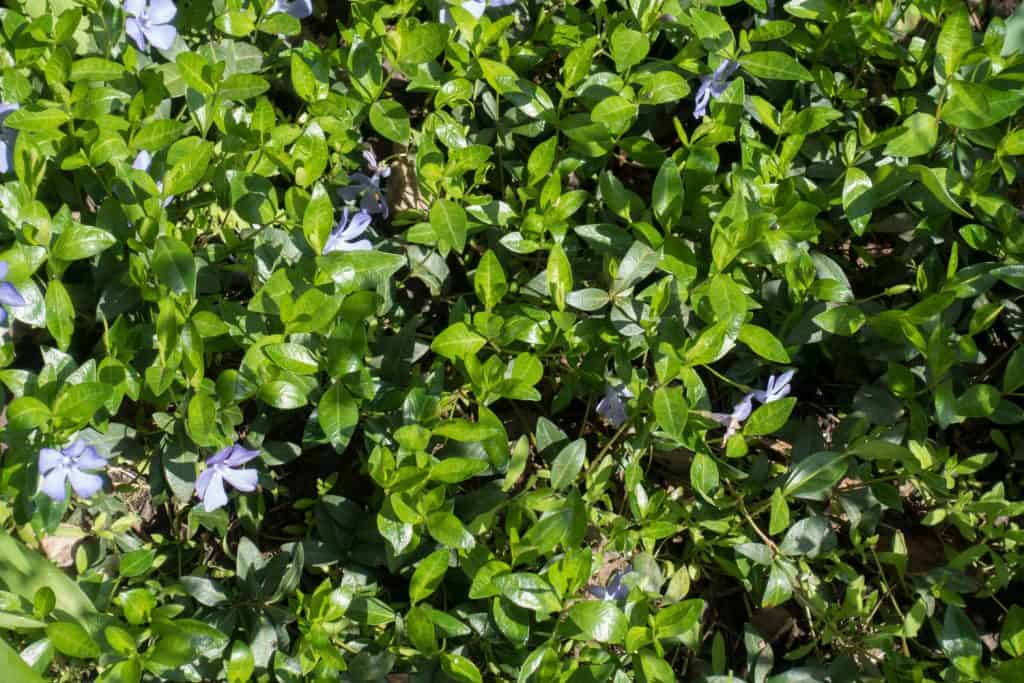
Trailing Vinca is a fast-growing ground cover that is grown as an annual in most hardiness zones.
It's a great ground cover to plant where you need a filler because it will spread very quickly. But you have to keep an eye on it because it can quickly grow out of control and take over an area.
Trailing Vinca is very versatile because it will grow in both sunlight and shade. It will also provide both color and fragrance to your garden.
This ground cover can be grown as an annual in zones 4-9, so it will have to be replanted every year. It may survive through the winter in zones 7-9.
Although it doesn't usually grow as a perennial, it may grow back from seeds sewn during the previous growing season.
5. Sweet Woodruff
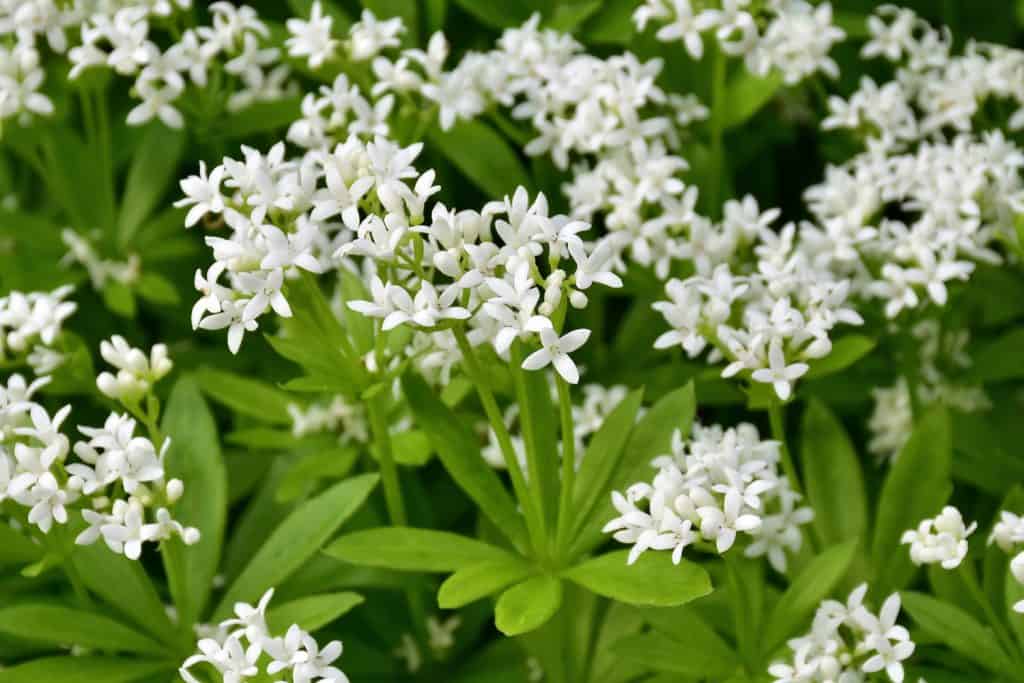
Sweet woodruff is an excellent ground cover to use as a border in shaded, moist, and rocky areas. Under the right conditions, it can spread as much as 18 inches in one year.
The plant will provide fragrant, green leaves for most of the year, but in spring, you're also rewarded with clusters of tiny white flowers. Sweet woodruff is a perennial that grows in hardiness zones 4-8.
6. Aubrieta
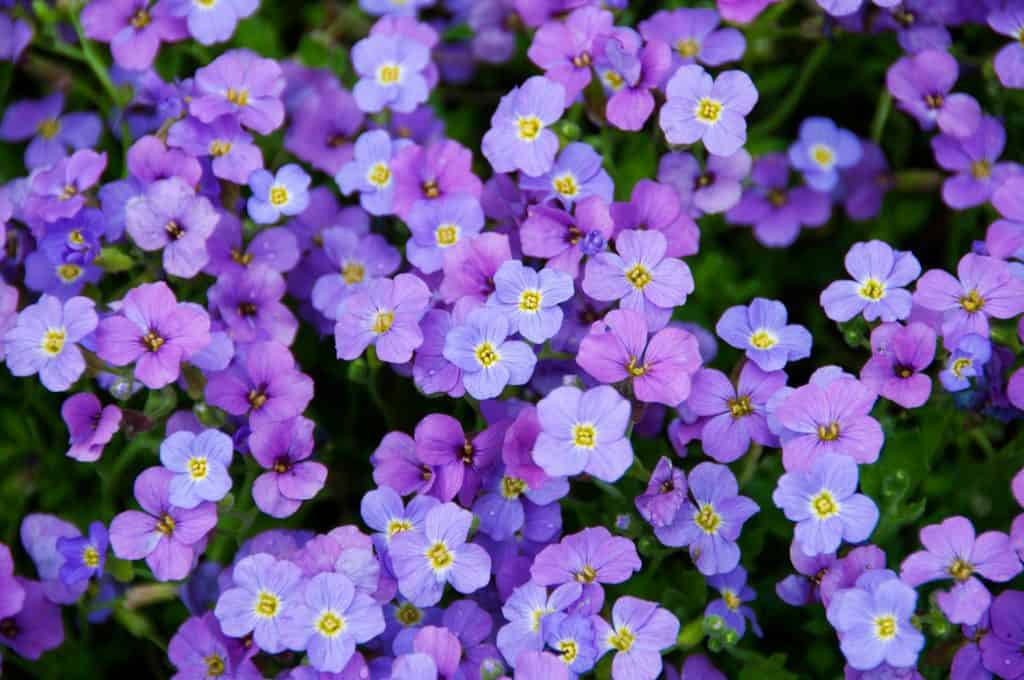
Many ground cover plants don't grow well in sunny areas, but aubrieta is the exception. If you need a filler or border plant for a sunny location, this is a good choice if the area receives at least 4 to 6 hours of sun daily.
It is also very drought-tolerant, making it perfect for areas that don't receive a lot of rainfall.
Aubrieta is a perennial evergreen plant, meaning that it will still provide color to your landscape even during the winter when your other plants have gone dormant.
From early spring to early summer, you'll be blessed with the purple flowers this plant produces as well. This ground covers spreads up to 24 inches and grows in hardiness zones 4-8.
7. Sedum
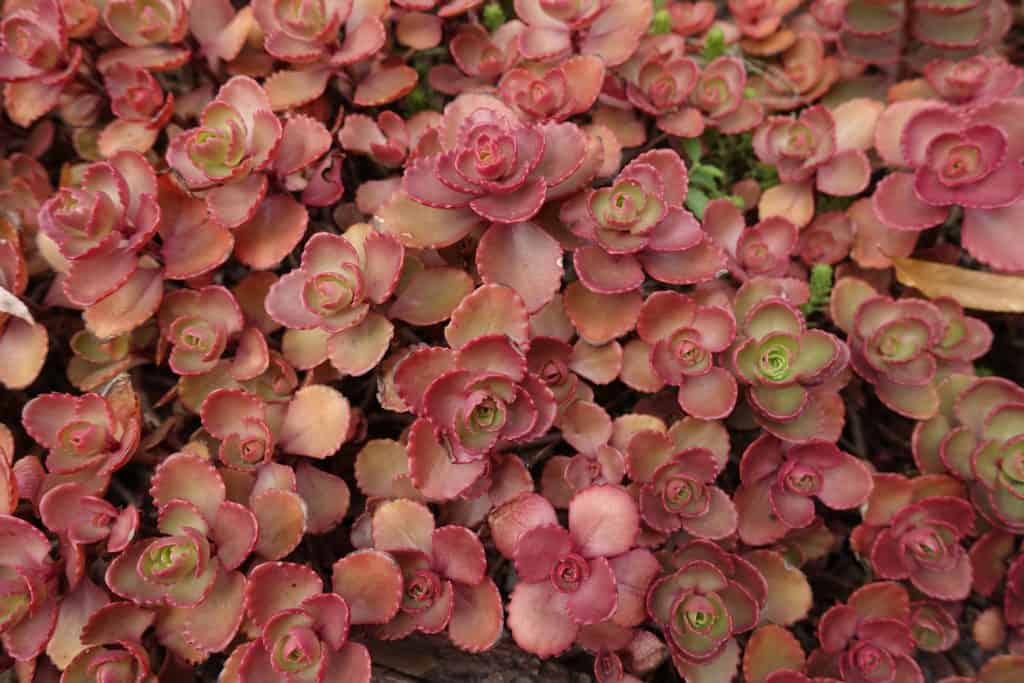
There are many different varieties of sedum, and all of them make excellent ground cover plants.
Some produce flowers in summer and early fall, which helps to attract pollinators to your garden. Others don't have flowers, but they do provide colorful leaves during spring and summer.
Sedum is one of the hardiest and most versatile ground covers you can buy. It grows well in the sun or part-shade and can even survive in poor soil conditions. You can plant it anywhere.
Sedum can spread up to 1 inch per month during the growing season, making it a relatively fast-growing ground cover. Most varieties will grow in hardiness zones 3-9.
8. Mazus
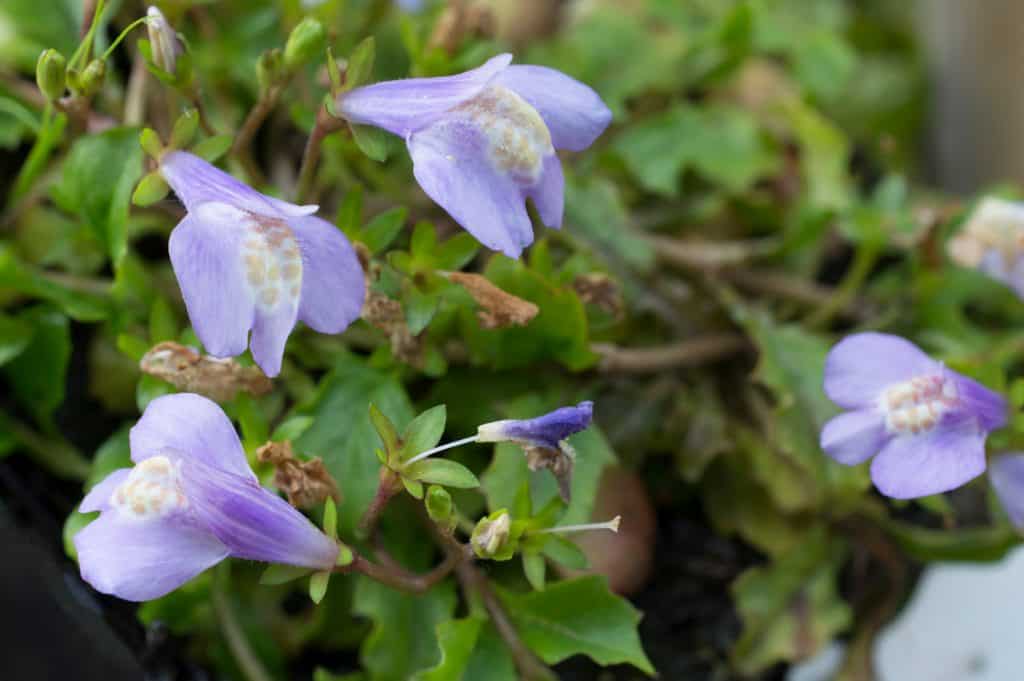
Mazus isn't the tallest ground cover on this list, nor does it have the largest spread, but it is fast-growing.
It reaches only two inches tall at maturity and can spread anywhere from 6 to 12 inches. Because of this, it is an excellent ground cover to grow around stepping stones and pathways.
This ground cover grows well in part shade or shady areas. It stays green year-round, but it produces small purple blooms starting in early spring.
Although one plant won't cover a large area, it is easy to propagate and transplant to other areas. That means that you don't have to buy a lot of plants to get good coverage. Mazus grows in hardiness zones 4-9.
See more: 12 Ground Cover Plants For Clay Soil
How Can You Make Ground Cover Plants Grow Faster?
Other than planting one of the fast-growing ground covers mentioned above, there aren't many ways that you can make a ground cover grow faster.
You can, however, take steps to ensure that you provide the ground cover you plant with the optimal conditions under which to grow. This will ensure that it grows at its normal rate and thrives, therefore effectively covering the ground.
Ground covers should be planted in spring to give them plenty of time to become established and mature.
Keep in mind that even with the fastest-growing ground covers, it takes most of them at least a year before they'll start to spread.
Most ground cover plants are sold in packs of six to eight. Make sure that you only purchase plants that will grow in a specific area. For example, if you need ground cover for a shady area, don't buy ground cover plants that grow in full sun.
Before planting a ground cover, dig out any weeds from the area and rake some compost into the soil to amend it. Then, dig a hole that is slightly wider than but deep enough to cover the root ball.
Give the plants a thorough watering after planting, the water every few days for the next couple of months so that the soil stays moist.
You can also add a layer of mulch to the area to help retain moisture. Following these steps should allow your ground cover plants to grow to their full potential.
What Ground Cover Will Choke Out Weeds?
Some people plant ground covers to reduce weeds in a specific area of their garden. Not all ground cover plants are effective at choking out weeds.
But if wanting to choke out weeds is your intention for planting ground cover plants, these should do the trick:
- Creeping thyme
- Dragon's blood sedum
- Creeping jenny
- Mazus
- Creeping phlox
See more: Does Compost Keep Weeds Down?
In Closing
No matter which type of ground cover plant you buy, it likely won't start to spread until its second year. But once they do start to spread, there are some that spread more quickly than others.
While there isn't necessarily one that grows the fastest, choosing a ground cover from the above list will help cover those areas that you want to be covered more quickly. Thanks for reading!
